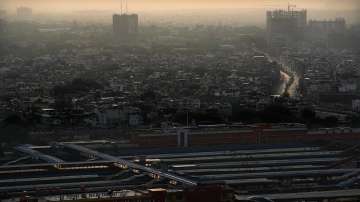Lockdown extended till May 17 | Big takeaways
Lockdown 3.0 will commence from May 4, being the extention of lockdown 2.0 and be in place till May17. Take a look at what all will be allowed, prohibited during this period. MHA on Friday announced further extention of the lockdown in the country.

The nation-wide lockdown which was supposed to end on May 3 has now been further extended till May 17 for two more weeks as coronavirus cases in the country are still on a rising graph. Though, the doubling rate of COVID-19 cases have slowed down, a positive development, but still the country is witnessing an average increase of over 1,000 cases in a day, therefore, the lockdown has been extended for 14 more days. However, Lockdown 3.0 will be a little different from the earlier two lockdown period. This time, the government has given relaxations in green zones (having no coronavirus cases), orange zones (having few coronavirus cases) subject to conditions but no relaxations have been given to the regions falling under the red zones, apart from ones that are already in place. With shutdown extended to two more weeks, take a look at big takeaways on Lockdown 3.0 in India.
Lockdown 3.0 | Big takeaways
- Nationwide lockdown extended for further period of two weeks with effect from May 4.
- Government issued new guidelines to regulate different activities during Lockdown 3.0, based on the risk profiling of the districts of the country into Red (hotspot), Green and Orange Zones.
- There are 319 districts of the country as green zones, 284 as orange and 130 as red zones.
- In containment zones, stringent perimeter control, active search for cases through the house to house surveillance by special teams formed for the purpose, testing of all cases as per sampling guidelines, and contact tracing and clinical management of all confirmed cases need will be done while in case of buffer zones, extensive surveillance for cases through monitoring ILI cases in health facilities needs to be done.
- All religious places will remain closed.
- All educational institutions will also remain closed.
- No relief for cinema halls, shopping malls, entertainment parks, bars and auditoriums as they will also remain shut during lockdown 3.0 irrespective of the zones.
- All social, political, sports, entertainment, academic, cultural, religious functions and other gatherings have also been prohibited.
- Hospitality services other than those used for housing health, police, government officials, healthcare workers, stranded persons, tourists, and those used for quarantine facilities have also been prohibited.
- Cycle rickshaws, autos, taxi, cabs, barber shops and intra-district plying of vehicles and buses are restricted in Red Zones during lockdown 3.0
- However, the government has allowed movement of individuals and vehicles, only for permitted activities with restrictions.
- 4-wheeler vehicles will have maximum two passengers besides the vehicle driver.
- For two wheelers, pillion rider is not allowed, according to the guidelines issued for Lockdown 3.0
- Industrial establishments in urban areas such as Special Economic Zones (SEZ), Export Oriented Units (EOUs), industrial estates and industrial townships with access control allowed in red zones.
- Manufacturing units of essential goods, including drugs, pharmaceuticals, medical devices, their raw material and intermediates; production units, which require continuous process, and supply chain; manufacturing of IT hardware have been allowed in the Red Zone.
- Jute industry with staggered shifts and social distancing and manufacturing units of packaging material are permitted.
- All industrial and construction activities are permitted in rural areas.
- Construction activities in urban areas; only in situ construction (where workers are available on site and no workers are required to be brought in from outside) and construction of renewable energy projects are permitted.
- All malls, market complexes and markets shall remain closed in urban areas such as areas within the limits of municipal corporations and municipalities.
- But shops selling essential goods in markets and market complexes are permitted.
- Also, all standalone (single) shops, neighbouring (colony) shops and shops in residential complexes are permitted to remain open in urban areas without any distinction of essential and non-essential.
- All shops in rural areas, except in malls, are permitted to remain open without any distinction of essential and non-essential.
- E-commerce activities will be permitted only in respect of essential goods.
- Private offices can operate with upto 33 per cent strength as per requirement with the remaining persons working from home.
- All government offices shall function with officers of the level of Deputy Secretary and above to the extent of 100 per cent strength. The remaining staff will attend up to 33 per cent as per requirement.
- However, defence and security services, health and family welfare, police, prisons, Home Guards, civil defence, fire and emergency
- service, disaster management and related services, National Informatics Centre (NIC), customs, Food Corporation of India (FCI), National Cadet Corps (NCC), Nehru Yuva Kendra (NYK) and municipal services shall function without any restrictions.
- Delivery of public services shall be ensured and necessary staff will be deployed for such purpose.
ALSO READ | Coronavirus cases in India cross 37,000-mark; over 1,200 deaths. Check state-wise list
ALSO READ | Railways runs 'Shramik Special' trains to move migrant workers, stranded people